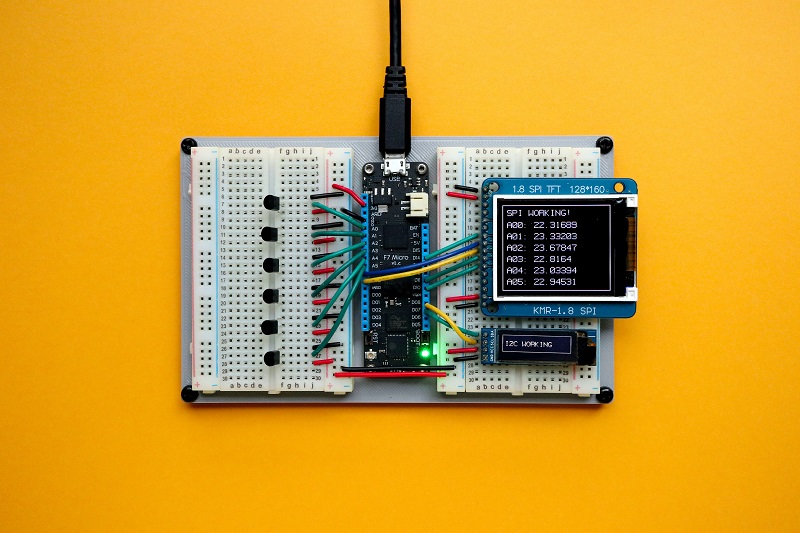Imagine a world where everyday objects could communicate, share information, and act autonomously to make our lives more efficient, convenient, and secure. This is the essence of the Internet of Things. At its core, IoT is a vast network of interconnected physical devices that collect and exchange data over the internet without requiring human intervention. These devices can range from small, sensor-equipped gadgets to massive industrial machines, all working in harmony to create a smarter and more connected world.
1. Smart Thermostats: These devices can regulate your home’s temperature remotely, learn your preferences, and even save you money on energy bills.
2. Fitness Trackers: Wearable IoT devices that monitor your physical activity, heart rate, and sleep patterns, helping you lead a healthier lifestyle.
3. Connected Appliances: From refrigerators that order groceries when you’re running low to coffee makers that brew your morning cup of joe at your preferred time, these appliances make daily life more convenient.
4. Industrial Sensors: In manufacturing and agriculture, IoT sensors monitor equipment health, track inventory, and optimize production processes.
5. Smart Cities: IoT is revolutionizing urban planning by enabling smart traffic lights, waste management systems, and public safety initiatives.
6. Healthcare Devices: Remote patient monitoring devices allow healthcare professionals to keep tabs on patients’ vital signs and health conditions in real time.
7. Environmental Sensors: IoT helps track air quality, water quality, and weather conditions, aiding in environmental conservation efforts.
The Future is IoT
As technology continues to advance, IoT devices will become even more prevalent and sophisticated. From smart cities to the next generation of wearable gadgets, the Internet of Things is poised to revolutionize the way we live, work, and interact with the world around us. In conclusion, IoT devices are the building blocks of a connected future. They transform ordinary objects into smart, data-driven devices that improve our lives in countless ways. So, the next time you adjust your thermostat with a smartphone app or receive a notification from your fitness tracker, remember that you’re witnessing the magic of the Internet of Things in action.
Shining a Light on the Problem
Traditional street lighting systems have been around for decades, relying on fixed schedules or photocells to determine when the lights should be on or off. However, these systems are far from efficient. They often waste significant amounts of energy by keeping lights on when they are not needed, and they require regular manual maintenance to ensure they’re functioning correctly.
IoT to the Rescue
IoT (Internet of Things) devices have ushered in a new era of intelligent street lighting. Here’s how:
1. Smart Sensors: IoT-equipped street lights are embedded with sensors that can detect ambient light levels, motion, and even weather conditions. This real-time data allows the lights to adjust their brightness and turn on or off automatically based on the specific requirements of the moment.
2. Remote Monitoring and Control: With IoT, street lights can be monitored and controlled remotely via a central management system. This means that city authorities can instantly respond to faults or outages, reducing downtime and improving overall safety.
3. Energy Efficiency: By using sensors to determine when to light up and at what intensity, IoT-enabled street lights significantly reduce energy consumption. This not only saves money but also helps to lower carbon emissions, contributing to a greener planet.
4. Cost Savings: The combination of reduced energy usage and lower maintenance costs results in substantial savings for cities and municipalities over time.
5. Customized Lighting: IoT allows for fine-tuning of lighting schedules and brightness levels in different areas of a city. For instance, a downtown area might require brighter lighting late at night compared to a residential neighborhood.
The Benefits are Illuminating
The advantages of implementing IoT devices for street lighting solutions are crystal clear:
1. Energy Savings: IoT-controlled street lights can reduce energy consumption by up to 50% or more, leading to significant cost savings for cities.
2. Increased Safety: Smart street lights can respond to changing conditions, ensuring that roads and public spaces are well-lit when needed the most, enhancing safety for pedestrians and drivers.
3. Environmental Impact: By reducing energy consumption and carbon emissions, IoT street lighting solutions contribute to environmental conservation.
4. Lower Maintenance Costs: With remote monitoring and automated fault detection, maintenance crews can be dispatched more efficiently, reducing operational costs.
5. Future Scalability: IoT infrastructure can be easily scaled to accommodate future technological advancements and additional smart city applications.
The Road Ahead
As cities continue to grow and evolve, the demand for smarter and more efficient infrastructure becomes paramount. IoT devices are leading the way in transforming traditional street lighting into a dynamic, data-driven system that not only illuminates our nights but also contributes to sustainability and economic efficiency.
In conclusion, street light solutions using IoT devices are not just a bright idea; they’re a game-changer. With their ability to adapt, conserve energy, and increase safety, these intelligent lighting systems are a shining example of how technology can enhance our urban environments and pave the way for a brighter, smarter future.
